In Search of Haecho on the Silk Road
His essay was discovered in 1908 by French sinologist and scholar, Paul Pelliot, inside Cave #17 in the Dunhuang Mogao Grottoes, and was later shipped to the France National Library in Paris, in an incomplete state as the front and back of the essay had disintegrated due to unknown reasons.
Haecho’s journey and discovery inspired me to explore the Silk Road. So this past September, I embarked on my journey from Xian, the modern day capital of Shanxi Province, or Chgangan, during the 8th century, to Urumqi, Xinjiang, bordering with Mongol. Today’s Xian was the starting or ending point of the ancient Silk Road. So I walked into the Islam market area of Xian downtown. The current Islamic people’s ancestors settled down in the Tang capital 2000 years ago as international traders and have maintained their identity with their mosques, carpet and food business and unique hats. The modern metropolitan city, representative of the booming economy, which now houses Korea’s largest conglomerate, Samsung Electronics. It is the hometown of China’s current Premier Mr. Xi Xin-ping.
After Xian, I took a high-speed train to Lianju to see the Huangha Soklim, “ Yellow River Rock Woods” and the old Byungyoungsa Temple and Grottoes. Most probably, this narrow valley where the temple and grottoes located was the Silk Road oasis 2000 years ago. The area was the upper stream of the Yellow River, the birth place of first Chinese civilization. I could see the old glorious days of Buddhism in the grottoes. However, most of the 1000 Buddha caves were empty. Restoration works are underway here. I lamented the Western art thieves and robbers in early 20th century who cut out from the earthen Buddha images, sculptures and mural paintings inside the caves when China was in turmoil under the names of archeologists’ exploration or exploitations.
The next destination was the western end of the Great Wall, Jiayumenguan. The first Ming Emperor ordered the fortification of defenses at China’s western frontier in order to prevent and deter the Hun invasions. This fort was built to house more than one army division, despite its isolated location. However, this must have intimidated the aggressors as after this fort was built, the Huns, and Mongols did not attempt an invasion since then at this location.
I arrived at Dunhuang by bus from Lianju in the middle of the night. Despite the darkness, I could still see and feel the outlines of the ancient cultural oasis. I fell into sleep, in my dream in searching for Cave #17 of Mogao Grottoes, UNESCO Cultural Heritage, where Haecho’s travel essay was discovered.
This was the part of the trip that I was most eager to experience. And the Tourism office has set up a program facilitating the visit for tourists. The following morning, I visited the Tourist information center which aired a 30-minute film on history of Dunhuang Mogao, before stepping onto a museum bus which transported me to another oasis where the famous Mogao [Mogao means caves in the rock cliff] was located in the shades of lined tall silver poplar trees along the stream. Dunhuang reminded me of the oases in Arizona and New Mexico and the Indian caves carved into the soft rock cliffs. The sun was bright and air was clean and fresh. The main cave housed the five-story stone Buddha built in Tang, China.

Not all caves were open to the public, but #17 was open. All my interest was on that cave, because Haecho’s travel essay was found inside the cave in 1908. There was a small library space on the right side wall from the entrance. The care-taking monk sealed the library, another small cave inside Cave#17 for the manuscripts. The library was sealed with a clay wall in order to camouflage and protect the manuscripts from the possible Hun invaders when Tang was no longer able to resist their invasions. This is why so many precious manuscripts had so long been protected. Fortunately, I met a Chinese tour guide and Dunhuang researcher who could speak Korean and asked her whether there was any record of Haecho’s stay in a Dunhuang cave. Her answer was “no.” Realistically, there is no hope to find the complete Haecho essay in its original state now. The only remnant of Haecho’s document was a photo copy of one page of the Wangochonchukkukjon displayed at a small museum near the cave 17. I was disappointed.
Many caves along the Silk Road were constructed for places of prayer to Buddha. Every cave was occupied by Buddha images, sculptures and paintings, encounters, blending and harmonizing arts of the East and West, seemingly managed by a monk or a group of monks. Merchants’ must have relied on their faith of the Buddha to protect them in their adventure to the next oasis city with the many hardships that they faced traveling the Silk Road. It was sad to see that all the Buddha sculptures and mural paintings inside the caves were gone and had been shipped to the European and American museums in early 20th century. However, I could faintly see the art works in ruins as good mixtures of the East and the Western people, colors and designs. The Silk Road was not only the trade route but also the cultural exchange route. All the art works in almost all Chinese caves were sadly stolen and shipped to the West. Restoration works were going on in all caves right now.
Dunhuang and other caves on the Silk Road were cities of religious arts like the European cathedrals with Christian paintings and sculptures.
In the slow-moving night train, I was heading to Trupan from 11: 30 pm to 8:30 am. After landed on Trupan, I visit the Bezekkilik Thousand Buddha Grottoes in an oasis cliff, but there was not much to look at inside the cave. I could see only the ruins of mural paintings. The most memorable part of Trupan was walking into the old Gaochang ruins where Tang monk, Xuanjang, stayed under the invitation of the ardent Buddhist King of the Goachang Kingdom in the mid-seventh century. This was one of the few places that still housed relics, including sculptures of the characters of Journey to the West, e.g., the monk, monkey and a faithful servant, a famous fictional story modeled after Monk Xuanjang’s pilgrimage to Buddha before Haecho. There is no way of knowing Haecho read the Journey to the West. I just guessed he read it before his own journey.
Haecho stayed in this area and recorded his arrival here in early November of 727 in his Wangochonchukkunjon. Tang’s military headquarters to control and govern the vast Western Territories was located in Kucha (640-790). Haecho wrote about Kucha and Anxi. Later in 751, the commander of this territory was General Koh Sun-ji, a son of A Koguryo officer. Haecho must have felt safe when he arrived in this Tang-controlled area after a long journey to India and the West. He must have found comfort here, because of its proximity to his final destination, Changan, about 1000 km away, and that its produce of melon, watermelon and pomegranate were produce from his native region. The oasis farmers wisely managed snow-melted water from the Tian Shan Mountain via underground channels, or the “Kaze”. The best fruits in the world were harvested under the desert weather and long sunlight hours. I enjoyed very much the Trupan melon during my two-day stay here. Haecho mentioned sweet grapes in this area. I could feel I took Haecho’s pleasant walk on Trupan land.
On the following day, I went up to my final stop of the Silk Road, Urumqi, pronounced as Urumuchi, the capital of Xinjiang Uyghur Autonomous Region, which was crowded with people and cars. I could see the burgeoning economy, driven by the oil and coal industries. There were many check-points by armed police and soldiers at the entrance of each hotel and even restaurants. The Chinese government carefully watches all foreigners visiting the region with possible terrorist independence movement. The best sightseeing at Urumqi was a boat cruise of the Tian Shan Heavenly Lake, comparable to Paikdu Mountain-top Lake. The Tian Shan divides Xinjiang in half, creating northern meadows and southern desert areas.
My short nine-day pilgrimage to Haecho was over when I arrived at Inchon Airport at 6:30 am of September 18. It was a small portion of his Silk Road. I saw his desert, met his sand storms and walked snowy mountains in leisurely. Another 13-hour flight to Washington, the last leg of my modern day Silk Road.
Dr. Choi is a Washington-based Korean poet and writer.
<By Yearn Hong Choi>
스마터리빙
more [ 건강]
[ 건강]이제 혈관 건강도 챙기자!
[현대해운]우리 눈에 보이지 않기 때문에 혈관 건강을 챙기는 것은 결코 쉽지 않은데요. 여러분은 혈관 건강을 유지하기 위해 어떤 노력을 하시나요?
 [ 건강]
[ 건강]내 몸이 건강해지는 과일궁합
 [ 라이프]
[ 라이프]벌레야 물럿거라! 천연 해충제 만들기
 [ 건강]
[ 건강]혈압 낮추는데 좋은 식품
[현대해운]혈관 건강은 주로 노화가 진행되면서 지켜야 할 문제라고 인식되어 왔습니다. 최근 생활 패턴과 식생활의 변화로 혈관의 노화 진행이 빨라지고
사람·사람들
more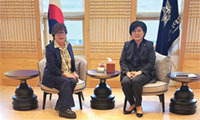
“한국어 교육 확산 협력”
한국어진흥재단(이사장 모니카 류)이 숙명여대(총장 문시연)와 한국어 교육 확산을 위한 협력에 나선다. 한국어진흥재단의 모니카 류 이사장은 지난…

KYCC·VWKC·주민의회 등 합동 타운 대청소 성료
한인타운청소년회관(KYCC)과 헤더 허트 시의원(LA 10지구) 사무실, 그리고 행사에는 윌셔 한인타운 커뮤니티 목소리(VWKC), 내셔널 유…
ROTC 남가주 동지회 골프 모임
ROTC 남가주 동지회(회장 이창훈)는 지난 22일 라미라다 골프코스에서 골프 모임을 열었다. 이날 행사에는 30여 명이 참석해 라운딩을 함께…
외대 동문회 정기이사회… 전정구 차기회장 선출
한국외국어대학교 남가주동문회(회장 서상희, 이사장 진 권)는 지난 21일 신북경에서 제2차 이사회를 개최하고 전정구 동문(77학번 스페인어과)…
[송년행사 게시판] 중앙중고 교우회 外
■ 중앙중고 교우회남가주 중앙 중·고등학교 교우회가 오는 12월13일(토) 오후 5시 놀웍에 위치한 더블트리 바이 힐튼 호텔(13111 Syc…
많이 본 기사
- ‘케데헌’ 더피가 뉴욕 하늘에…추수감사절 퍼레이드서 시선집중
- 프리웨이서 타이어 날아와 한인 운전자 사망 ‘날벼락’
- 한국 최대 가상자산 거래소 업비트 445억 해킹에 당국 “북한 라자루스 유력 검토”
- 내란특검, ‘정치관여·직무유기’ 조태용 전 국정원장 구속기소
- ‘캄보디아 범죄단지’ 한국인 대학생 살해 주범, 프놈펜서 체포
- “조류독감, 사람 간 전염 가능해지면 코로나보다 심한 팬데믹”
- 국힘 ‘패스트트랙 충돌’ 26명 중 21명 항소…송언석은 안 해
- 日, 트럼프 ‘중일갈등’ 관여에 위기감… “미일문제로 번질 수도”
- 트럼프 “피격 주방위군 2명중 1명 사망… ‘괴물’이 극악무도행위”
- 해병특검 150일 수사 마무리…외압 정점 尹 등 33명 재판에
- 트럼프 행정부, ‘세계 에이즈의 날’ 기념 중단
- 알리바바, 약 540달러 미만 스마트안경 내놨다…저커버그에 도전장
- 홍콩 아파트 화재참사 사망자 100명 육박…수사도 본격화
- 트럼프, 총격사건후 反이민 고삐… “19개 우려국 영주권 재조사”
- ‘AI방산기업’ 안두릴, 실전·훈련서 기술결함 연이어 노출
- 트럼프, 군인피격계기 ‘反이민’·’軍 치안투입’ 박차 가하나
- 주방위군 총격범, CIA가 키운 아프간 對테러부대 활동 전력
- 아시안이라고 총으로 얼굴 폭행까지
- 검찰 “백악관 인근 총격범, 차 몰고 대륙 횡단해 권총 범행”
- 한인업소, 추수감사절에도 정상 영업
- “볼링장서 행복을 굴리다”
- 응급실 대기시간 단축 기대
- 맘다니 인수위에 한인 3명 포진
- 공수처장, 국회위증 고발건 특검 이첩 건의에 “재검토하라”
- 트럼프 “총격당한 주방위군 병사 2명 중 1명 사망”
- “에어프레미아, 내년 3월 워싱턴 취항”
- ‘노욕’· ‘자가복제’ 인정이요..나영석, 왜 ‘스타 PD’냐 묻거든
- ‘박수홍♥’ 김다예 “마약·도박·스폰서 루머..75kg+탈모 왔다”
- 33시간 지났는데도…하늘엔 검은 연기, 창문선 벌건 불꽃
- 박은빈♥양세종, ‘오싹한 연애’
- 김우빈이 글, 신민아가 그림..12월 20일 결혼식 청첩장 공개
- 페루 법원, 카스티요 前대통령에 내란음모 징역 11년형
- 하메네이 “이란은 미국과 협력 추구하지 않아”
- ‘패스트트랙 충돌’ 항소 포기한 검찰…나경원 등 8명은 항소
- 18개주 100여개… H마트 전국 매장 확대 ‘박차’
- 캘리포니아 ‘햄버거·피자도 가장 비싼 주’
- 디딤새 전통예술원, DC서 기원무 공연
- 우파활동가 암살에 주방위군 피격…긴장 팽팽한 美 흔드는 총격
- 美매체 “K뷰티, 미국시장 빠르게 침투…틱톡이 판도 바꿔”
- 아이폰17 판매 돌풍 애플, 삼성 넘고 1위
- 사상 첫 한인 킹카운티 의원 취임...스테파니 페인 취임식에 가족과 서은지총영사도 참석해 축하
- 방탄소년단 완전체 컴백 앨범에 이 프로듀서들이? “2026년 최고의 앨범 될듯 “글로벌 팬 기대
- 푸틴 “美 계획, 협정 기반 가능…우크라 철군해야 종결”
- LA 카운티 산불 및 이민단속 피해자들 대상… 주거비 1만5천불까지 지원 개시
- 홍명보호 ‘포트2(2026 북중미 월드컵)’ 확정… ‘죽음의 조’를 피하라
- 홍명보호 아이러니, 죽음의 조 확률 오히려 올랐다... 이탈리아·덴마크 PO 패스 결국 ‘포트4’ 배정
- 내란특검, 추경호 체포통지서 법원 제출…내주 영장심사 전망
- 김봉식 “포고령에 근거해 국회의원 출입 통제…굉장히 후회”
- [여명] 천재 한 명이 만 명을 먹여 살린다
- ‘국회 패스트트랙 충돌’ 민주당 전현직 의원 오늘 1심 결심
1/5지식톡

-
 테슬라 자동차 시트커버 장착
0
테슬라 자동차 시트커버 장착
0테슬라 시트커버, 사놓고 아직 못 씌우셨죠?장착이 생각보다 쉽지 않습니다.20년 경력 전문가에게 맡기세요 — 깔끔하고 딱 맞게 장착해드립니다!장착비용:앞좌석: $40뒷좌석: $60앞·뒷좌석 …
-
 식당용 부탄가스
0
식당용 부탄가스
0식당용 부탄가스 홀세일 합니다 로스앤젤레스 다운타운 픽업 가능 안녕 하세요?강아지 & 고양이 모든 애완동물 / 반려동물 식품 & 모든 애완동물/반려동물 관련 제품들 전문적으로 홀세일/취급하는 회사 입니다 100% …
-
 ACSL 국제 컴퓨터 과학 대회, …
0
ACSL 국제 컴퓨터 과학 대회, …
0웹사이트 : www.eduspot.co.kr 카카오톡 상담하기 : https://pf.kakao.com/_BEQWxb블로그 : https://blog.naver.com/eduspotmain안녕하세요, 에듀스팟입니다…
-
 바디프렌드 안마의자 창고 리퍼브 세…
0
바디프렌드 안마의자 창고 리퍼브 세…
0거의 새제품급 리퍼브 안마의자 대방출 한다고 합니다!8월 23일(토)…24일(일) 단 이틀!특가 판매가Famille: $500 ~ $1,000Falcon: $1,500 ~ $2,500픽업 & 배송직접 픽업 가능LA…
-
 바디프렌드 안마의자 창고 리퍼브 세…
0
바디프렌드 안마의자 창고 리퍼브 세…
0거의 새제품급 리퍼브 안마의자 대방출 한다고 합니다!8월 23일(토)…24일(일) 단 이틀!특가 판매가Famille: $500 ~ $1,000Falcon: $1,500 ~ $2,500픽업 & 배송직접 픽업 가능LA…
케이타운 1번가
오피니언
 조재성 LA 포럼 회장·도시비평가
조재성 LA 포럼 회장·도시비평가 [조재성 박사의 두 도시 이야기] 코리아타운, 불완전함의 아름다움
 김재천 서강대 국제대학원 교수
김재천 서강대 국제대학원 교수 [김재천 칼럼] 경제로 안보를 사는 시대
 정민정 서울경제 국제부장
정민정 서울경제 국제부장 [여명] 천재 한 명이 만 명을 먹여 살린다
 허경옥 수필가
허경옥 수필가 [윌셔에서] 조용한 명절
 최문선 / 한국일보 논설위원
최문선 / 한국일보 논설위원[지평선] ‘피지컬 몽골’의 그늘

[왈가 왈부] 민주당 ‘1인1표제’ 내홍… 정치 극단화는 경계해야죠
 정숙희 논설위원
정숙희 논설위원‘조금만 도와주는 일’의 아름다움
 파리드 자카리아 워싱턴포스트 칼럼니스트 / CNN ‘GPS’ 호스트
파리드 자카리아 워싱턴포스트 칼럼니스트 / CNN ‘GPS’ 호스트 미국, 실패한 우크라이나 정책으로 회귀
 김동찬 시민참여센터 대표
김동찬 시민참여센터 대표 [미국은 지금] 2025년 추수감사절의 그림자
1/3지사별 뉴스

정혜선한국전통예술원 ‘아리랑-동방의 울림’공연 성황
정혜선한국전통예술원의 특별공연 ‘아리랑-동방의 울림’(Arirang-Echoes of the East)이 지난 23일 전석 매진속에 뉴저지 포…
오바마케어 보조금 2년 더 연장되나

“에어프레미아, 내년 3월 워싱턴 취항”
신생 항공사인 에어프레미아(Air Premia, 사진)가 내년 3월부터 인천과 워싱턴 덜레스 공항을 정기운항할 것으로 알려져 관심이 쏠린다.한…
마이클 박 연방 판사 ‘유력한 대법관 후보자로 급부상’

트럼프 “총격당한 주방위군 병사 2명 중 1명 사망”
도널드 트럼프 대통령은 27일 아프가니스탄 출신 이민자로부터 전날 워싱턴DC의 백악관 인근에서 총격을 당한 주방위군 병사 2명 중 1명이 사망…
피아니스트 조성진, 내년 1월 SF에 온다

오늘 하루 이 창 열지 않음 닫기 




























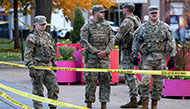


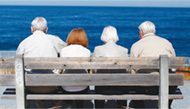
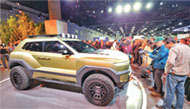
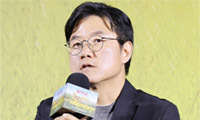
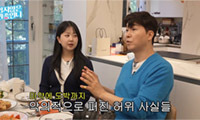
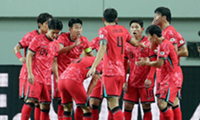














.png)


댓글 안에 당신의 성숙함도 담아 주세요.
'오늘의 한마디'는 기사에 대하여 자신의 생각을 말하고 남의 생각을 들으며 서로 다양한 의견을 나누는 공간입니다. 그러나 간혹 불건전한 내용을 올리시는 분들이 계셔서 건전한 인터넷문화 정착을 위해 아래와 같은 운영원칙을 적용합니다.
자체 모니터링을 통해 아래에 해당하는 내용이 포함된 댓글이 발견되면 예고없이 삭제 조치를 하겠습니다.
불건전한 댓글을 올리거나, 이름에 비속어 및 상대방의 불쾌감을 주는 단어를 사용, 유명인 또는 특정 일반인을 사칭하는 경우 이용에 대한 차단 제재를 받을 수 있습니다. 차단될 경우, 일주일간 댓글을 달수 없게 됩니다.
명예훼손, 개인정보 유출, 욕설 등 법률에 위반되는 댓글은 관계 법령에 의거 민형사상 처벌을 받을 수 있으니 이용에 주의를 부탁드립니다.
Close
x